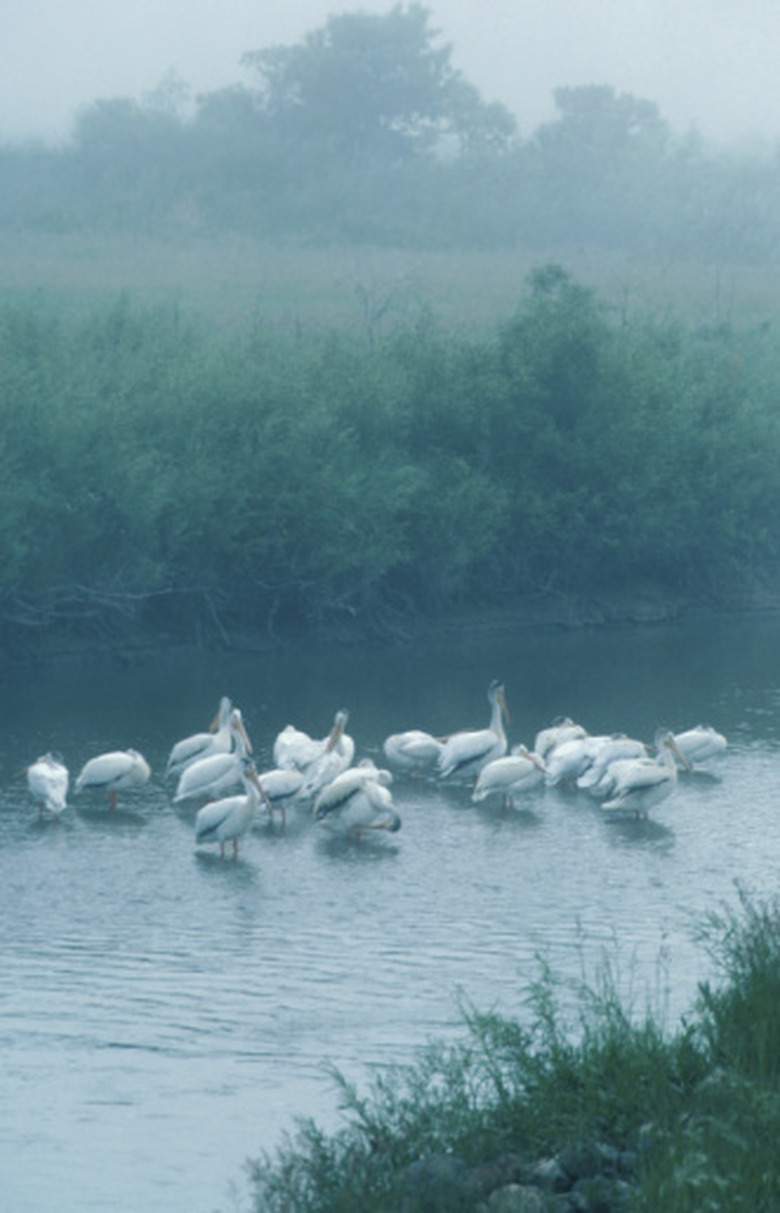What Kind Of Endangered Animal Lives In Taiga?
Taiga or boreal forest is the world's largest biome (environmental region or habitat.) It is an almost continuous belt of mostly evergreen trees that stretches across a large part of Alaska and Canada, then in Asia and Northern Europe. It is also home to several animals on the International Union for Conservation of Nature's Red List of endangered species.
Siberian Crane
Siberian Crane
The Siberian crane nests in the wetlands of Russia's lowland taiga. As of 2011, there are about 3,750 Siberian cranes in the wild, yet the birds are considered critically endangered, which means they're at a high risk of extinction. This categorization is due to the belief that numbers will drastically decline following the development of the Three Gorges Dam in China. The dam threatens the wintering grounds of 95 percent of the total Siberian crane population.
Whooping Crane
Whooping Crane
The whooping crane is not only the tallest bird in North America, it has the unfortunate distinction of being the most endangered due to pressures on traditional migratory and wintering habitats. The only self-sustaining population left in the wild nests in the boreal forest wetlands of the Wood Buffalo National Park in northwestern Canada. While there are less than 400 whooping cranes left in the wild, conservation efforts have seen their numbers rise in recent years.
Amur Tiger
Amur Tiger
The Amur tiger is the world's largest cat. Human encroachment on their habitat has confined the species primarily in the eastern portion of the Russian taiga. Though Amur tiger numbers have remained stable since 2000, they were once hunted to the brink of extinction, with some 40 tigers remaining in the wild in the 1940s. As of 2011, there are about 450 Amur tigers in the wild. They are listed as endangered by the IUCN.
Amur Leopard
Amur Leopard
The Amur leopard–which is also known as the Far East, Manchurian or Korean leopard–is in an even more precarious position than its tiger cousin. Logging and human encroachment have confined the last remaining wild population to the temperate forest and taiga of the eastern Russian province of Primorsky Krai. As of 2011, there are about 30 Amur leopards left in the wild, making them a critically endangered species.
European Mink
European Mink
Though once widespread throughout Europe, the European mink is now restricted primarily to the northern taiga of Eastern Europe, though an isolated population exists in the boreal forests of northern Spain and western France. Loss of habitat and over-hunting have made them an endangered animal, with numbers believed to be less than 2,000 in the wild and decreasing.
Przewalski's Horse
Przewalski's Horse
The Przewalski's horse, also known as the Takh or Mongolian horse, is the last remaining breed of wild horse. Extinct in the wild since the late 20th century, captive Przewalski's horses have been recently re-introduced into the high mountain taiga of western Mongolia. As of 2011, there about 325 Przewalski's horses in the wild. Though their population is growing, the small current number leaves them critically endangered.
Cite This Article
MLA
Collins, Dave. "What Kind Of Endangered Animal Lives In Taiga?" sciencing.com, https://www.sciencing.com/kind-endangered-animal-lives-taiga-8211848/. 22 November 2019.
APA
Collins, Dave. (2019, November 22). What Kind Of Endangered Animal Lives In Taiga?. sciencing.com. Retrieved from https://www.sciencing.com/kind-endangered-animal-lives-taiga-8211848/
Chicago
Collins, Dave. What Kind Of Endangered Animal Lives In Taiga? last modified March 24, 2022. https://www.sciencing.com/kind-endangered-animal-lives-taiga-8211848/



